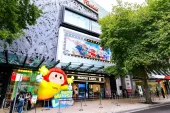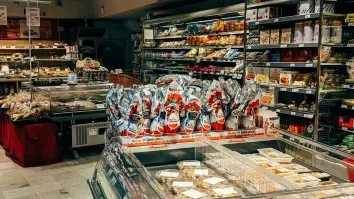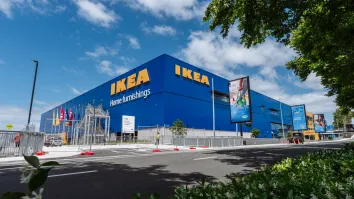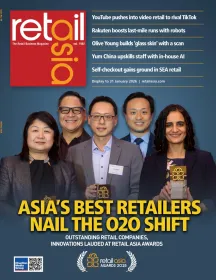Change-ready Leadership
Change permeates all industries. It ushers the entry of new players as well as the exit of others. Retailers’ years of establishment, expertise and leading position do not guarantee success anymore. Instead, retailers who actively seek and act on change are the new winners in a business environment where the fast and reliable replace the slow and steady.
What is Change Leadership?
Change leaders are future-oriented and anticipative. They seize opportunities and minimise business disruptions. To be change-ready, they are curious and always ask questions. They are open to new ideas and willing to learn from any situation. They are confident, courageous and humble people who can engage in debate over ideas, focusing on the best interest of their business, without going into a battle of egos and personalities.
Why is Change Leadership important?
Retailing is at the maturity stage of the Retail Life Cycle,characterised by sales reaching the peak, intense competition and the market becoming saturated. As a result, retailers encounter difficulties in increasing their profits.
Whatever they choose to do, they should never do more of the same things. According to Albert Einstein, “Insanity is doing the same thing over and over again and expecting different results.” Heeding Einsten’s advice, retailers must change their way of thinking and action to increase their probability of greater success.
For example, when retail sales are slow and low, retailers often respond by cutting prices based on the assumption that products are priced to move. Price cuts cause margins to decline. To compensate for the smaller margins, higher turnover is needed. To achieve higher turnover, more price cuts are needed. Over time, price cuts become costly for retailers. With more price cuts, commoditisation emerges as manufacturers seek to lower their costs of production. In a price-cutting environment, retailers never win. They merely use price cuts to drive consumption in the short term. This leads to transactions, not loyalty.
What if retailers change the way they perceive their low sales problem? Instead of manipulating customers with price cuts, is it not better to investigate why customers are not coming or buying? If retailers know why their customers buy from them, this insight will point them to more relevant and effective strategies in customer engagement and loyalty building.
Faced with keen competition – because of the presence of foreign brands in Asia, online retailing, rising rental costs, lowcalibre staff and shortage of manpower – most offline retailers have responded by setting up their online stores. The lack of manpower cultivates more reliance and promotes higher adoption of technology such as in-store technologies, self-checkout counters and digital marketing. These decisions make the entire in-store experience more hi-tech than ‘hi-touch’. Is this what offline customers really want for taking the trouble to be on-site?
What if retailers stop these knee-jerk responses and lead change instead? What if they start by gaining deep customer insights to re-define the problem first in order to explore other possibilities and create different and more effective solutions?
What are some of the key changes to watch?
- Digital Customers
Consumers are getting more connected and mobile, with devices ranging from smartphone to tablet to laptop to smart-TV and even smart-watch. Businesses, meanwhile, respond with better devices, faster speed and more storage. Mobile and connected devices have become exciting mediums for retailers to connect and retail to their customers beyond space and time constraints, thereby increasing offline store productivity.
Omnichannel retailing as well as click-and-collect options are digital solutions that help retailers to offer retailing in line with their customers’ changing lifestyles. Forward-looking retailers need to rethink how to provide seamless experience across channels, re-layout stores for click-and-collect service, forge partnerships with logistics companies and influence real estate developers to offer concierge service and goods collection points in condominiums.
- Asian Customers
With advancement and efficiency in air travel, Asian consumers can and do cross borders effortlessly. Inbound travellers comprising tourists and business travellers are a key customer segment in retail stores today. Alternatively, retailers can access and serve non-domestic customers via their online stores or by setting up overseas offline stores. However, to do well in targeting these customers, retailers need to be equipped with Asian cultural and international business skills.
- Maturing Customers
With better health education and care, consumers are living longer. Consumers aged 60 years and above, unlike their earlier counterparts, are more affluent. They may stay alone and plan to engage in leisure activities such as travel, wine and dine. Are retailers equipped to serve the needs of these maturing customers?
- Community Building
Customers move in groups and are influenced by their opinion leaders. To grow business, retailers need to first grow communities, for example, Apple users in the Apple ecosystem. Communities connect informally, exchange views and influence their members. They are powerful as their members consult each other on buying decisions. Community building is a critical skill-set to have. Retailers need to know how to build communities and make their members loyal instead of focusing on driving short-term sales.
Interestingly, most of the key changes described above stem from customers and their changing lifestyles, not technology per se. Technology is an enabler to help retailers do their job better. Hence, it makes great business sense to always keep line of sight on customers and their changes. Next, be equipped with IT and cultural knowledge and skills to serve them well.



















 Advertise
Advertise






